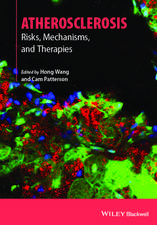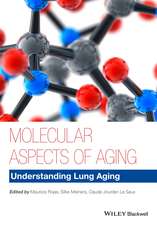Studies on Renal Disorders: Oxidative Stress in Applied Basic Research and Clinical Practice
Editat de Toshio Miyata, Kai-Uwe Eckardt, Masaomi Nangakuen Limba Engleză Hardback – 15 dec 2010
| Toate formatele și edițiile | Preț | Express |
|---|---|---|
| Paperback (1) | 1403.98 lei 6-8 săpt. | |
| Humana Press Inc. – 23 aug 2016 | 1403.98 lei 6-8 săpt. | |
| Hardback (1) | 1843.73 lei 6-8 săpt. | |
| Humana Press Inc. – 15 dec 2010 | 1843.73 lei 6-8 săpt. |
Din seria Oxidative Stress in Applied Basic Research and Clinical Practice
- 5%
 Preț: 1483.21 lei
Preț: 1483.21 lei - 18%
 Preț: 1272.98 lei
Preț: 1272.98 lei - 18%
 Preț: 1007.65 lei
Preț: 1007.65 lei - 18%
 Preț: 1667.12 lei
Preț: 1667.12 lei - 18%
 Preț: 1242.52 lei
Preț: 1242.52 lei - 15%
 Preț: 695.70 lei
Preț: 695.70 lei - 15%
 Preț: 700.94 lei
Preț: 700.94 lei - 18%
 Preț: 1235.43 lei
Preț: 1235.43 lei - 18%
 Preț: 1560.73 lei
Preț: 1560.73 lei - 18%
 Preț: 1225.94 lei
Preț: 1225.94 lei - 18%
 Preț: 951.29 lei
Preț: 951.29 lei - 18%
 Preț: 959.98 lei
Preț: 959.98 lei - 18%
 Preț: 953.65 lei
Preț: 953.65 lei - 18%
 Preț: 965.97 lei
Preț: 965.97 lei - 18%
 Preț: 966.27 lei
Preț: 966.27 lei - 18%
 Preț: 958.07 lei
Preț: 958.07 lei - 15%
 Preț: 654.95 lei
Preț: 654.95 lei - 18%
 Preț: 954.45 lei
Preț: 954.45 lei - 18%
 Preț: 961.41 lei
Preț: 961.41 lei - 18%
 Preț: 962.18 lei
Preț: 962.18 lei - 24%
 Preț: 826.78 lei
Preț: 826.78 lei - 20%
 Preț: 562.86 lei
Preț: 562.86 lei - 18%
 Preț: 1243.46 lei
Preț: 1243.46 lei - 18%
 Preț: 1010.96 lei
Preț: 1010.96 lei
Preț: 1843.73 lei
Preț vechi: 2248.45 lei
-18% Nou
Puncte Express: 2766
Preț estimativ în valută:
352.85€ • 367.01$ • 291.29£
352.85€ • 367.01$ • 291.29£
Carte tipărită la comandă
Livrare economică 14-28 aprilie
Preluare comenzi: 021 569.72.76
Specificații
ISBN-13: 9781607618560
ISBN-10: 1607618567
Pagini: 800
Ilustrații: XVIII, 786 p.
Dimensiuni: 155 x 235 x 35 mm
Greutate: 1.22 kg
Ediția:2011
Editura: Humana Press Inc.
Colecția Humana
Seria Oxidative Stress in Applied Basic Research and Clinical Practice
Locul publicării:Totowa, NJ, United States
ISBN-10: 1607618567
Pagini: 800
Ilustrații: XVIII, 786 p.
Dimensiuni: 155 x 235 x 35 mm
Greutate: 1.22 kg
Ediția:2011
Editura: Humana Press Inc.
Colecția Humana
Seria Oxidative Stress in Applied Basic Research and Clinical Practice
Locul publicării:Totowa, NJ, United States
Public țintă
Professional/practitionerCuprins
Preface.- Chapter 1. Oxidative stress injury in glomerular mesangium .- Chapter 2. Transition Metals and other Forms of Oxidative Protein Damage in .- Renal Disease.- Chapter 3. Cyclo-oxygenase in the kidney and oxidative stress .- Chapter 4. Renin angiotensin system in the kidney and oxidative stress -Local Renin-Angiotensin-Aldosterone-System and NAD(P)H oxidase-dependent oxidative stress in the kidney- .- Chapter 5. Thiamine in diabetic renal disease – dietary insufficiency, renal.- washout, anti-stress gene response, therapeutic supplements, risk predictor and link to genetic susceptibility.- Chapter 6. Novel members of the globin family and their function against oxidative stress .- Clinical Aspects of Oxidative Stress in the Kidney.- Chapter 7. Hypertension .- Chapter 8. Uric acid and oxidative stress .- Chapter 9. Reactive oxygen and nitrogen species, oxidative and nitrosative .- stress and their role in the pathogenesis of acute kidney injury.- Chapter 10. Oxidative stress in the kidney: proximal tubule disorders .- Chapter 11. Iron metabolism and oxidative stress .- Chapter 12. Hypoxia, oxidative stress and the pathophysiology of contrast-media-induced nephropathy .- Chapter 13. Cardiovascular complications in renal failure: implications of advanced glycation end-products and their receptor, RAGE .- Chapter 14. Infection and the kidney .- Chapter 15. Oxidative/carbonyl stress in the renal circulation and cardiovascular renal injury .- .- Current Therapy Targeting Oxidative Stress.- Chapter 16. Renin angiotensin system .- Chapter 17. Oxidative stress in kidney injury-peroxisome proliferator-activated receptor- agonists are in control.- Chapter 18. Statin .- Chapter 19. N-acetylcysteine in kidney disease .- Chapter 20. Advanced glycation end products (AGEs) inhibitor .- Section 2. ‘Hypoxia’.- Hypoxia Biology.- Chapter 21. Involvement of hypoxia-inducible factor 1 in physiological and pathological responses to continuous and intermittenthypoxia: Role of reactive oxygen species .- Chapter 22. Regulation of oxygen homeostasis by PHDs .- Chapter 23. Oxygen-dependent regulation of erythropoiesis .- Chapter 24. Intricate link between hypoxia and oxidative stress in chronic kidney disease .- Chapter 25. RNA interference and the regulation of renal gene expression in .- hypoxia.- Hypoxia Pathology in Renal Disorders.- Chapter 26.Cardio-renal connection: The role of hypoxia and oxidative stress .- Chapter 27. HIF in acute kidney injury – from pathophysiology to a novel approach of organ protection .- Chapter 28. Hypoxia in chronic kidney disease: the final common pathway to end stage renal disease .- Chapter 29. Oxidative stress and hypoxia in the pathogenesis of diabetic.- nephropathy .- Chapter 30. Estimation of kidney oxygenation by BOLD-MRI .- Chapter 31. Anemia and progression of chronic kidney disease.- Section 3. Novel therapeutic approaches against oxidative stress and hypoxia.- Chapter 32. Novel therapeutic approaches against hypoxia and oxidative stress,targeting intracellular sensor molecules for oxygen and oxidative stress .- Chapter 33. Endoplasmic reticulum (ER) stress as a target of therapy against oxidative stress and hypoxia .- Chapter 34. Stem cell therapy against oxidative stress and hypoxia.
Recenzii
From the reviews:
“This book is a collection of reviews on derangements of oxygen metabolism in kidney diseases. … addressed to students (mostly postgraduate), researchers, and academic clinicians … . I liked the organization of each chapter with an abstract, key words, introduction, and conclusion as well as extensive, up-to-date, relevant references. … This is the only book that I am aware of that is an extensive, updated review of abnormal oxygen metabolism in a large number of pathologic renal diseases.” (Mony Fraer, Doody’s Review Service, July, 2011)
“This book is a collection of reviews on derangements of oxygen metabolism in kidney diseases. … addressed to students (mostly postgraduate), researchers, and academic clinicians … . I liked the organization of each chapter with an abstract, key words, introduction, and conclusion as well as extensive, up-to-date, relevant references. … This is the only book that I am aware of that is an extensive, updated review of abnormal oxygen metabolism in a large number of pathologic renal diseases.” (Mony Fraer, Doody’s Review Service, July, 2011)
Textul de pe ultima copertă
Conditions such as oxidative stress and hypoxia, which have a generalized impact on the oxygen metabolism, have been implicated in the genesis of kidney disease. This means that deepening our understanding of the pathobiology of oxygen metabolism in such diseases could be a fruitful path towards tangible clinical benefits. Studies in Renal Disorder collects reviews from leading researchers and clinical scientists working in exactly this field, providing an overview of the latest advances.The causal role of impaired oxygen metabolism in kidney disease has numerous clinical implications. It affects our understanding of the therapeutic benefits accruing from anti-hypertensive agents; the way we control hyperglycemia/hyperinsulinemia and hyperlipidemia; and our use of dietary approaches to the correction of obesity. The defensive mechanisms against oxidative stress, such as the Nrf2-Keap1 system, and hypoxia, such as the PHD-HIF system, have recently been explored in various cells, including kidney cells. These mechanisms include intracellular sensors for oxidative stress and hypoxia. This means that novel approaches targeting these sensors may offer clinical benefits in kidney disease in which oxidative stress and/or hypoxia is a final, common pathway.
Caracteristici
Covers broad derangements of oxygen metabolism, such as oxidative stress and hypoxia Covers the defensive mechanisms against oxidative stress (e.g. the Nrf2-Keap1 system) and hypoxia (e.g. the PHD-HIF system) Leading basic researchers and clinical scientists provide up-to-date, cutting-edge reviews on recent advances in the pathobiology of oxygen metabolism in kidney disease, especially oxidative stress and hypoxia Includes supplementary material: sn.pub/extras
Descriere
The causal role of impaired oxygen metabolism in kidney disease has numerous clinical implications. It affects our understanding of the therapeutic benefits accruing from anti-hypertensive agents; the way we control hyperglycemia/hyperinsulinemia and hyperlipidemia; and, our use of dietary approaches to the correction of obesity. The defensive mechanisms against oxidative stress, such as the Nrf2-Keap1 system, and hypoxia, such as the PHD-HIF system, have recently been explored in various cells, including kidney cells.
These mechanisms include intracellular sensors for oxidative stress and hypoxia. This means that novel approaches targeting these sensors may offer clinical benefits in kidney disease in which oxidative stress and/or hypoxia is a final, common pathway.







